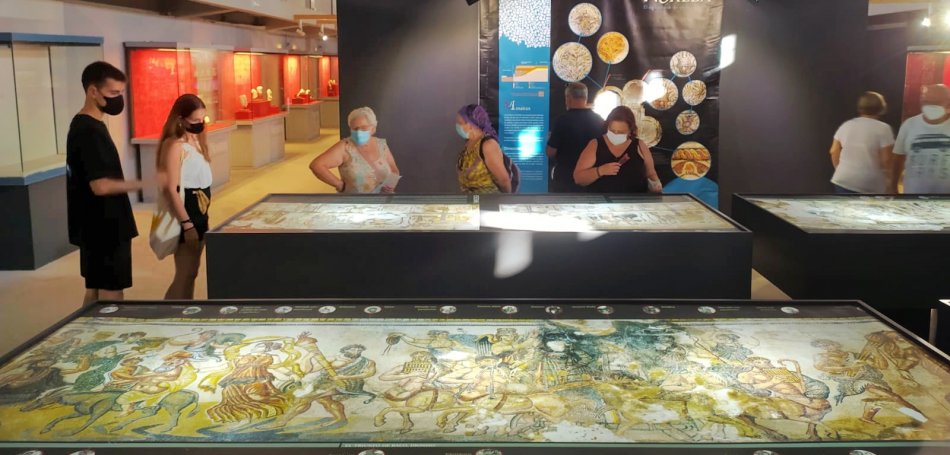
- publicado 09.09.2021
- por Cuenqueando
- villa romanaNohedamosaicoyacimientosRoman Villa Nohedamosaicsarchaeological site
Interpretation Center: The Roman Villa of Noheda
Terence Varro, a Roman author from the 1st century BC, already told us that the fields were granted by divine nature, but that it was human science that built the cities. This concept is what combines what we currently know as a Roman villa, a type of rural habitat that was widespread during Romanization throughout the entire Empire and with a profound functional transformation in the last centuries of Roman rule, of which one of its The greatest exponents at the European level is the Roman Villa of Noheda.
The Interpretation Center of the Roman Villa of Noheda, located in the municipality of Villar de Domingo García, comes to contextualize and place on the historical map one of the most important archaeological sites in Spain, whose mosaics are located today on the podium imperial for its size and grandeur. A resource like this joins the extensive and significant catalog of Roman Cuenca, with spaces such as Segóbriga, Valeria, Ercávica or the Lapis Specularis mines, which give an important reflection of Rome's passage through the lands of Cuenca.
The Interpretation Center is divided into several spaces focused on both the Roman world in general and the villa and its mosaics in particular, allowing a detailed tour of all its elements. The variety of panels takes the visitor into the most general and interesting concepts of life and society in Roman times, thus creating a pleasant and educational historical framework that helps to better understand the circumstances that led to the construction of a villa like the of Noheda and see what the daily life of a Roman could be like in this type of space.
The most interesting part is the one that focuses squarely on the development of the mosaics, with precise explanations and visual infographics that bring us even closer to this wonder that has survived to this day. The clarity and detail of the panels take us fully into the story developed on the floor of the tri-absidated room. The cycle, which is related to the story of Paris and Helen, begins with the myth of the mare race that Pelops had to compete with Oenomaus, father of Hippodamia, in order to marry her. Oenomaus, jealous of his daughter's suitors because of an oracle that predicted that one of them would kill him, always challenged the suitors to win a mare race, and if they lost, he paid them the curious tribute of cutting off their heads. Thanks to a stratagem, Pelops caused Oenomaus' chariot to jump into the air and thus be able to win the race, finally marrying the intended Hippodamia.
But the scene of Paris and Helen is also interesting, directly related to the previous one, and which begins with the famous Judgment to determine which of the three main goddesses takes over the Apple of Discord. Between power, victory and the most beautiful woman, Paris had no doubt, and the abduction of Helen (symbolized in the mosaic through a ship), will end up triggering the Trojan War.
But no less interest is the Dionysian procession, one of the best preserved in the entire Empire and which shows the god of wine and fertility in the fields accompanied by his curious entourage made up of satyrs and maenads.
Visiting the Villa de Noheda Interpretation Center allows us to observe in detail one of the most important and outstanding mosaics of the entire Roman Empire, an authentic jewel in the lands of Cuenca that no one should miss.
So take note because Cuenca houses a great wealth of vestiges of the Roman Empire, even its subsoil hides great treasures such as the Roman Mines of Lapis Specularis. Sites as impressive as Segobriga, Valeria or Ercávica.
 ES
ES EN
EN PT
PT